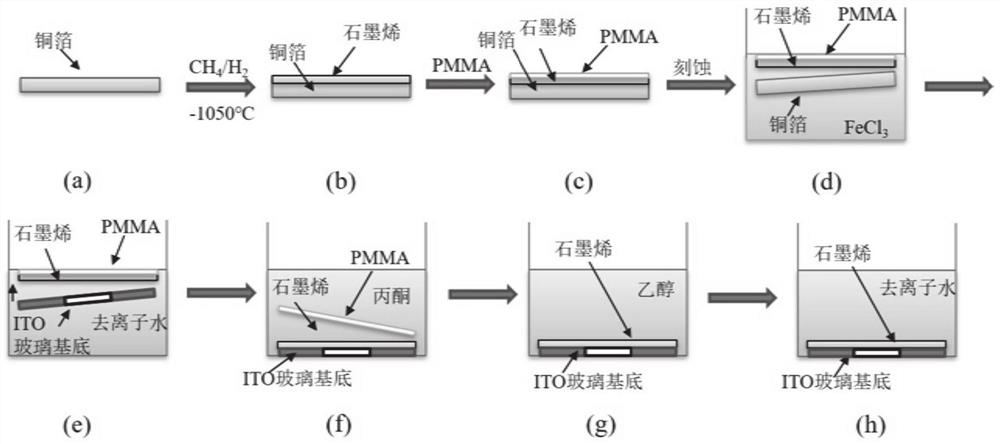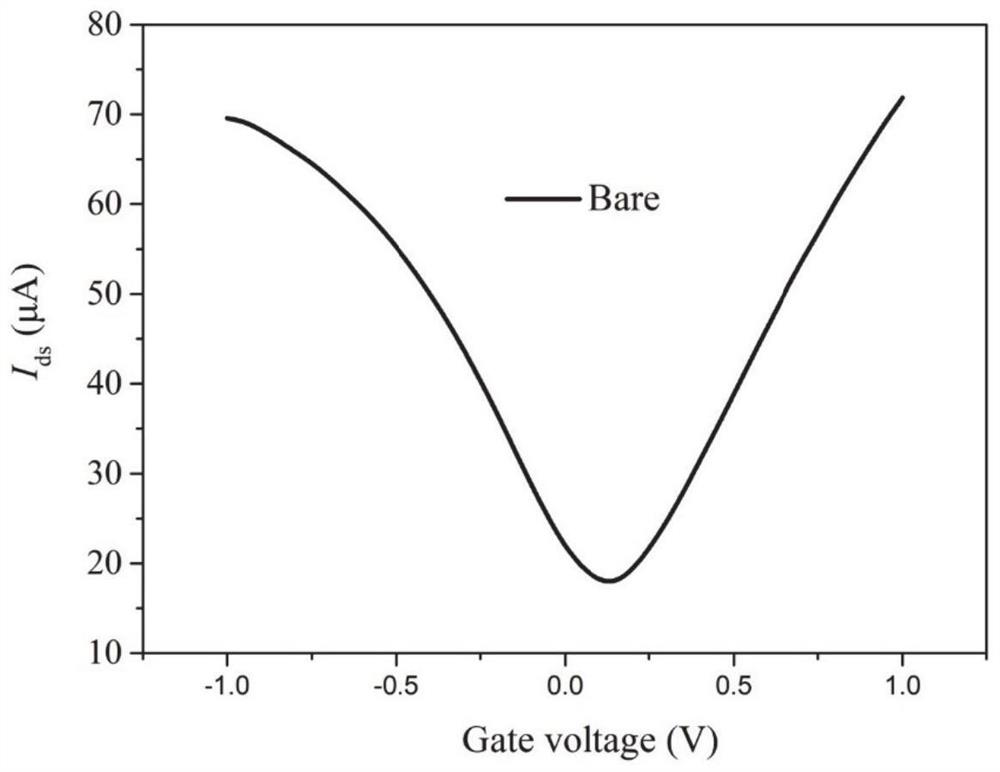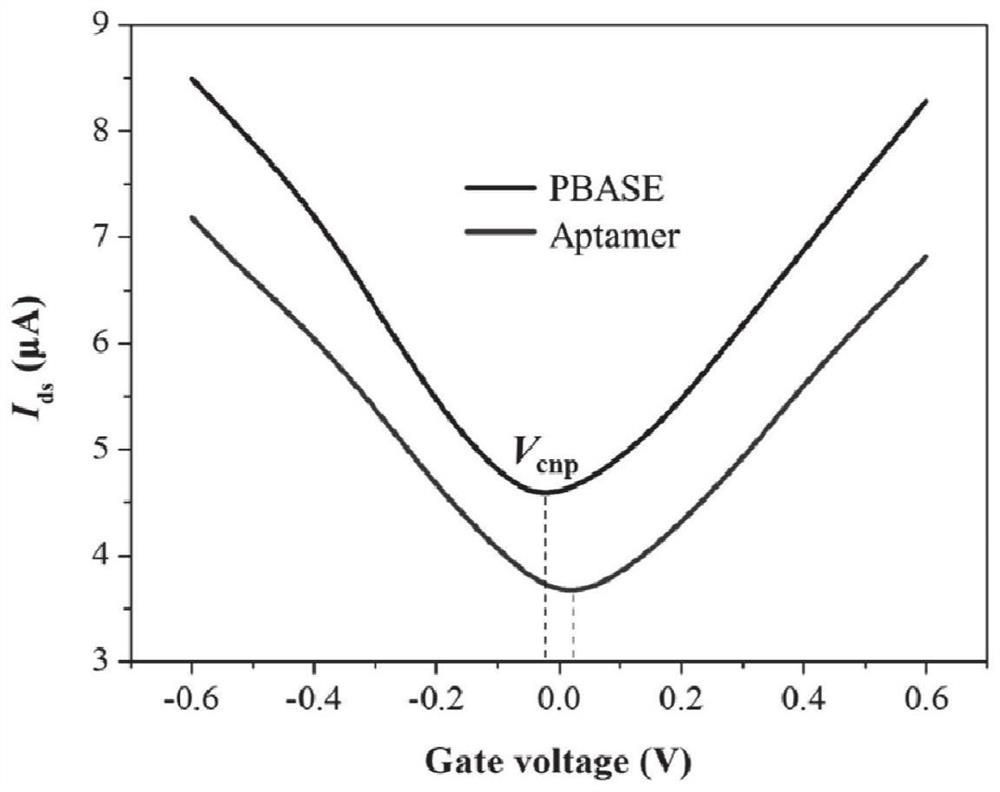Graphene biosensor, preparation method and method for detecting escherichia coli
A biosensor, graphene technology, applied in the field of microbial detection, can solve the problems of complex operation, long cycle, high technical requirements of experimental operators, etc., and achieve the effect of simple operation, short cycle and high detection sensitivity
- Summary
- Abstract
- Description
- Claims
- Application Information
AI Technical Summary
Problems solved by technology
Method used
Image
Examples
Embodiment 1
[0052] Such as figure 1 As shown, the manufacture of a graphene sensor needs to go through the process of etching, transfer of graphene, and fixing the sample cell.
[0053] A kind of preparation method of graphene sensor, comprises steps as follows:
[0054] (1) A glass plate with a size of 30×30 mm is selected as a substrate. Both sides of the glass plate are coated with indium tin oxide (ITO) conductive film, and a 30×5mm glass channel is left in the middle, and the two ends covered with indium tin oxide (ITO) conductive film are respectively used as source and drain. Before the glass substrate is used, it needs to be ultrasonically cleaned with acetone, ethanol, and deionized water for 20 minutes to remove impurity molecules on the glass substrate.
[0055] (2) Graphene was prepared by chemical vapor deposition (CVD), using copper foil as a substrate and methane as a carbon source to prepare graphene.
[0056] (3) Cut the graphene / copper foil into a size of 1×1cm and pl...
PUM
| Property | Measurement | Unit |
|---|---|---|
| Resistance | aaaaa | aaaaa |
| Resistance | aaaaa | aaaaa |
Abstract
Description
Claims
Application Information
 Login to View More
Login to View More - R&D
- Intellectual Property
- Life Sciences
- Materials
- Tech Scout
- Unparalleled Data Quality
- Higher Quality Content
- 60% Fewer Hallucinations
Browse by: Latest US Patents, China's latest patents, Technical Efficacy Thesaurus, Application Domain, Technology Topic, Popular Technical Reports.
© 2025 PatSnap. All rights reserved.Legal|Privacy policy|Modern Slavery Act Transparency Statement|Sitemap|About US| Contact US: help@patsnap.com



